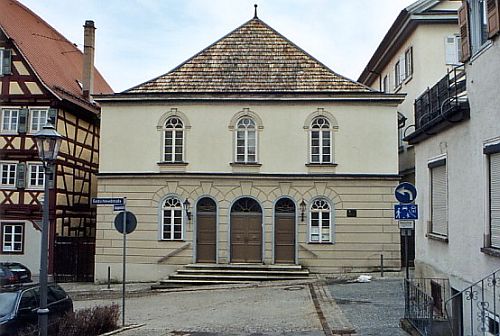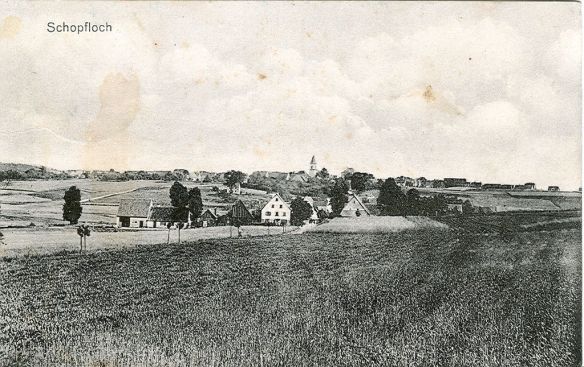Right now I am pretty absorbed in following up on the Seligmann trail in Germany and the US and in preparing for my trip, both in terms of travel details and in terms of trying to find as much information as I can about the Brotmans. I’ve been spending time going back over the Brotmanville Brotmans, hoping to find some clues I missed before the DNA results corroborated the family story that Joseph and Moses Brotman were brothers.
But before too much time goes by, I want to reflect a bit on my Dreyfuss and Nusbaum ancestors. In many ways they typify the German Jewish immigrants who arrived in America in the 1840s and 1850s. They started as peddlers, they eventually became the owners of small dry goods stores in small towns, and for many of them, they remained dry goods or clothing merchants. Unlike my Cohen relatives, who were pawnbrokers for the most part, or my Seligman relatives, who started as merchants, but became active in politics and civic and military matters in Santa Fe and elsewhere, my Dreyfuss and Nusbaum ancestors began and stayed Pennsylvania merchants, even into the 20th century.
In addition, the Dreyfuss and Nusbaum families almost all stayed in Pennsylvania where they started. There were some who went to Peoria, though most returned to Pennsylvania, and a few who went to Baltimore, but overall the Dreyfuss and Nusbaum families started in small towns in Pennsylvania and in Harrisburg and eventually moved to Philadelphia. As far as I’ve been able to find them, many if not most of their descendants also stayed in the Philadelphia area.
But beneath what might appear to be a very consistent and predictable pattern of living was a lot of turmoil. These were families who endured terrible tragedies—many children who died young from disease or from accidents, and many children who lost a parent at a very young age. Tuberculosis ravaged the family, as did heart disease and kidney disease. One member of the family died in the Great Fire of San Francisco. There were also a tragic number of family members who took their own lives.
In addition, this was a family that went from poverty to comfort and then suffered financially when the 1870 Depression struck, causing many of the stores to close and forcing family members into bankruptcy. Yet the family in general rebounded, started over, and once again became merchants with successful businesses in most cases.
The other pattern I’ve noticed in the Nusbaum and Dreyfuss lines is assimilation. Although there were certainly examples of intermarriage and conversion among the Cohen and certainly the New Mexican Seligman lines, that tendency to assimilate and move away from Judaism seemed even more widespread among the Dreyfuss and Nusbaum descendants. There were fewer people buried at places like Mt Sinai in Philadelphia, fewer indications of synagogue membership or other participation in the Jewish community. Perhaps those early years in the small towns where they were likely the only Jews in town took a toll on the role that Judaism would play in their lives and their identities.
Overall, these two lines were very hard to research and write about. Not because they were hard to locate, although the Fanny Wiler mystery kept me going for quite a long time. But because there was just so much unhappiness, so much suffering. When I think back to their roots, coming from two small towns in Germany, Schopfloch and Hechingen, I wonder whether those early immigrants ever questioned their decision to leave Germany. I assume they left for economic opportunities and freedom from the discrimination they faced as Jews in Germany. Presumably they believed they had found both when they arrived and as they settled into life in Pennsylvania. And in many ways they had. They were free to worship, or not worship, as they saw fit. They were able to make a living, own property, even own businesses. They survived.

Hechingen Synagogue
http://www.alemannia-judaica.de/images/Images%2050/Hechingen%20Synagoge%20533.jpg
But all the tragedy and loss they endured had to wear on them in many ways. Many of the family lines ended without any descendants. I have had more trouble finding current descendants than I’ve had with the other lines I’ve researched. I don’t have one relative with the name Nusbaum, aside from my father, whose middle name is Nusbaum. The family seems to have disappeared, blended into other names, other families, other traditions.
For that reason, as hard as it was, I am happy that I was able to document and tell their story: where it began in Germany, how it continued in Pennsylvania, and what happened between their arrival in the 1840s and in the century that followed.



What a thoughtful post, Amy. Your blog really adds to my understanding of late 19th century history.
LikeLike
Thank you so much for your kind comment, Luanne. I myself have learned so much more doing this research than I ever did as a history major in college.
LikeLiked by 1 person
I was a history (and marketing) major, too!
LikeLiked by 1 person
What a tapestry you have woven from the many threads of stories of your family! Amy, I enjoyed this summary of these lines of your family very much. I think it is so important to document the hardships and struggles and disappointments, along with the happy times. Thanks!
LikeLike
Thank you so much for your kind and encouraging thoughts. I only wish these people had more happy times. The hardships and struggles seemed to be overwhelming. Thanks for reading and commenting.
LikeLiked by 1 person
Wonderful post Amy. It’s certainly fascinating learning about our ancestors and what they experienced in their lives. I have ancestors who left Norway and moved to the US in the mid-1800’s. I wish they had left journals so I’d know why they left and how they felt about their new lives in the US.
LikeLiked by 1 person
Oh, wouldn’t it be nice if they’d kept journals or wrote more letters (or ANY letters)? Thanks so much for reading and commenting.
LikeLiked by 1 person